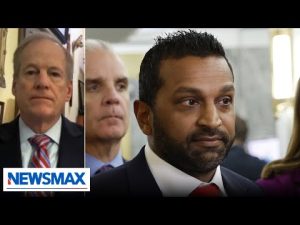In a bold move that has the potential to shake up the federal workforce, a new buyout program could soon be on the table for employees of the federal government. The idea, which is generating plenty of buzz, advocates offering a buyout to federal workers who are hesitant to make the trek back to the office. Under this plan, a significant 10% of approximately 2 million federal employees might just decide to hang up their hats and take the generous buyout offer of eight months’ salary. This kind of offer is sure to catch the attention of those considering a change in their career path.
The reasoning behind this proposal is simple and straightforward. The federal government is made up of hard-working individuals who are funded by American taxpayers. After all, if taxpayers are footing the bill for salaries, they deserve employees showing up for work, diligently pushing the paper and making life run smoothly. The program would essentially say: if you’re not willing to return to your desk, the door is open, and the government is willing to help ease the transition. However, it’s important to note that this offer won’t apply to everyone. Military personnel, Postal Service employees, and those in critical national security positions will not be eligible for this buyout.
While the idea sounds appealing to many, it also opens a floodgate of discussions surrounding the culture and dynamics within the federal workforce. The conversations are punctuated with questions about productivity, accountability, and work ethic. Critics will point to the potential pitfalls of incentivizing employees to leave rather than fostering an environment where they want to show up and contribute. But supporters see it as a chance to refresh and rejuvenate a workforce that has, perhaps, become a little too accustomed to remote work. It’s a mixed bag of opinions that is likely to either bloom into a conversation about government reform or wither in the face of criticism.
Among other big news echoes coming from Washington, the political fallout surrounding various military leaders is heating up. The spotlight has turned to a key figure, General Milley, due to his perceived missteps during a political event in 2020. There are murmurs of possible consequences pending investigations into his role during that tumultuous time. This escalation has raised eyebrows and sparked discussions about accountability in leadership roles. The sentiment flying around is that while politicians may guard their positions viciously, military leaders should uphold a different standard of conduct.
And not to be overlooked, the ongoing debate about children and education is swirling. The Trump administration has stepped up with a firm stance against what it describes as “gender insanity” in schools, particularly concerning young children. A clear commitment has been articulated: federal funding will no longer support medical transitions for minors. The focus here is to protect children from irreversible decisions, which is seen as a much-needed step in the conservative playbook. As the policies and arguments unfold, it’s clear that the conversation surrounding education, the government’s role, and the well-being of children is far from over.
In summary, the proposed government buyout has the potential to reshape the federal workforce, reflecting a bold approach to an evolving work culture. Meanwhile, the discussions surrounding military leadership and children’s education represent a larger narrative shaping political discourse today. The intersection of these discussions leads to an intriguing and complex landscape as this administration continues to navigate the dial of reforms and policies. Whether these changes will be embraced by the public or face pushback remains to be seen, generating ongoing conversation and speculation within the broader community.



